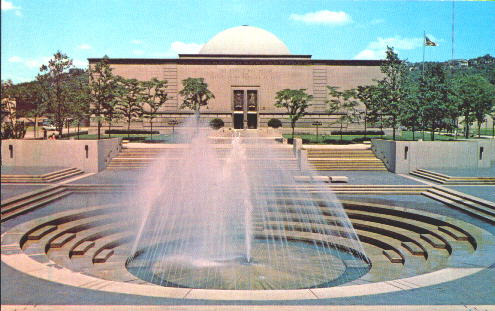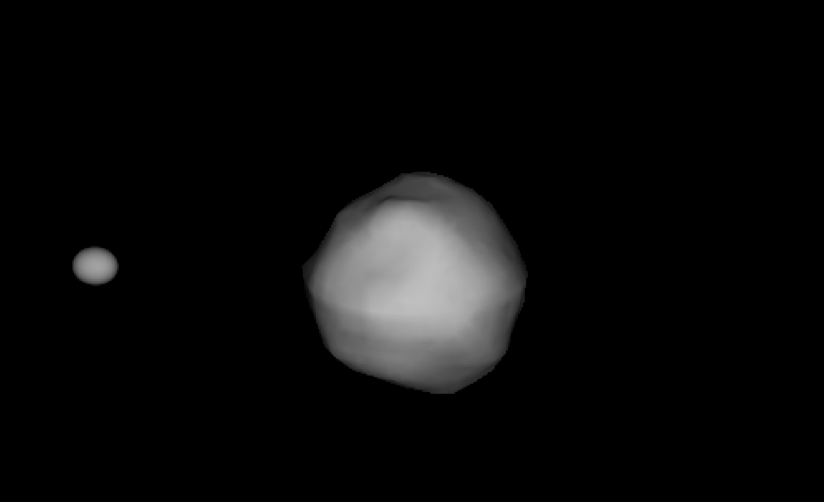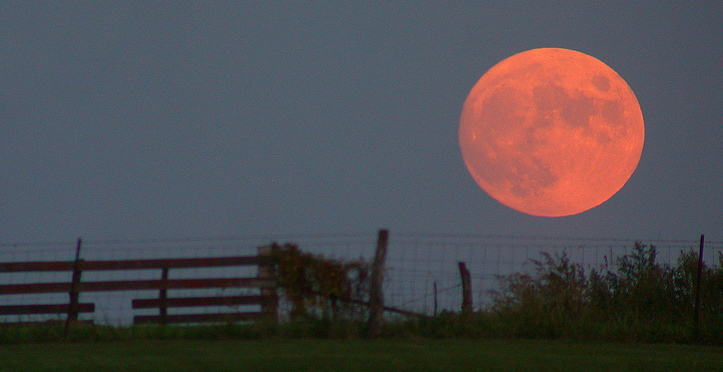
Pictured is the original Buhl Planetarium and Institute of Popular Science (a.k.a. Buhl Science Center), Pittsburgh's science and technology museum from 1939 to 1991. In 1973, Buhl Planetarium became the first official member of the Association of Science and Technology Centers (ASTC), the organization of science museums throughout the world, which includes nearly 700 member institutions in almost 50 nations. In 1991, Buhl Planetarium was succeeded by The Carnegie Science Center (which includes a new, digital Buhl Planetarium). This month, ASTC held their annual conference in Pittsburgh, as they had held their 1996 annual conference in Pittsburgh. (Image Source: Friends of the Zeiss' History of Buhl Planetarium Internet Web-site)
By Glenn A. Walsh
Reporting for SpaceWatchtower
Science centers and museums around the world were greatly affected by the COVID-19 Pandemic, over the last two years. But, they are now rebounding, as was seen at the annual conference of the Association of Science and Technology Centers (ASTC) in Pittsburgh this month.
ASTC is the member organization for science centers and museums throughout the world. The ASTC annual conference is the premiere meeting of science and technology engagement professionals and educators in science communications and the STEM (Science, Technology, Engineering, and Mathematics) fields. These annual conferences include plenary and concurrent sessions, exhibit hall and poster vendors, along with social events and other networking opportunities.
The Pittsburgh conference, titled “What's Next?”, was held at Downtown Pittsburgh's David L. Lawrence Convention Center September 12 to 15 (with some “Pre-Conference Intensive” sessions held on Sept. 11), hosted by The Carnegie Science Center along with the Children's Museum of Pittsburgh and MuseumLab. The Pittsburgh conference, which hosted about 1,300 science education professionals, had originally been scheduled for 2020, but was delayed by the Pandemic. ASTC held virtual, on-line conferences in 2020 and 2021. So, this year's conference was the first in-person conference since the 2019 conference, which had been held in Toronto.
At the last plenary session Wednesday morning, just prior to the Keynote Address, ASTC presented their annual Roy L Shafer Leading Edge Awards. These awards are given to science centers and museums which excel in informal science education and engagement, enhancing both their organization and the professional field.
To recognize institutions which went beyond traditional education in the STEM fields to meet special needs of the community, a new category of awards was inaugurated this year: Community Service.
The Discovery Center museum of Springfield, Missouri epitomizes the purpose of this new category of awards. The Discovery Center provided child care services for health care workers during the Pandemic, as well as starting a private school (Discovery School at the Center) that focused on STEM, which assisted many parents during the Pandemic. In December, the Discovery Center had won the inaugural STOP award with a $1 million prize from Forbes Magazine and the Center for Education, regarding their extra efforts to serve their community.
During the Wednesday session, “Seizing Opportune Moments: Stories From Museums Taking on Big Change in a Changing World”, Discovery Center Executive Director Rob Blevins stated one important thing taught to children was the science of germs and the importance of hand-washing. He also indicated that, although there was a great community need during the Pandemic and the regular museum operation was on hiatus, there were no lay-offs; in fact, they actually had a need to add staff (they have 22 full-time and 28 part-time staff members).
Other awardees in the Community Service category included:
Telus Spark Science Centre, Calgary, Alberta, Canada – This institution created a new staff position, and new programming, to improve engagement with indigenous people in the community.
Copernicus Science Centre, Warsaw, Poland – The staff of this institution went well beyond the call-of-duty to support Ukrainians who had fled to Poland, after the Russian invasion of their country. The science center became a place of refuge, where the planetarium and exhibits were free-of-charge to refugees, as well as creating Ukrainian-language activities for children.
An award for Special Recognition in Community Service and Resilience was given to the Junior Academy of Sciences of Ukraine, which operates the Science Museum of Kyiv. This recognized the continued service to the community that the Junior Academy of Sciences provides, under very difficult circumstances. Tragically, a staff member was killed, who was involved in the preparation of a new science museum in Mariupol; as with most of the city, the historic building where this museum was to locate was destroyed. Yet, through the Internet and other opportunities, the Junior Academy of Sciences of Ukraine has continued to provide STEM learning to the residents of their country.
Other Roy L Shafer Leading Edge Awards, in the Resilience category, were given to:
Emerald Coast Science Center, Fort Walton Beach, Florida – When the Pandemic forced the science center to close, it was in dire straits, financially. The community pitched-in to save the local institution with supplemental funds. With these funds, the museum was able to erect outdoor exhibits that could benefit community members during the Pandemic.
Museum of Discovery, Little Rock, Arkansas – In February of 2021, a broken roof boiler led to water damaging two floors of offices and two major exhibit galleries. After being closed for 27 weeks, the rebuilding allowed the institution to create a facility even more responsive to community needs. This included new exhibits on STEM skills needed for renovations.
New York Hall of Science, Corona, Queens, New York – Originally established as part of the 1964 New York World's Fair, the museum suffered from both the Pandemic and a second closure in 2021 due to flooding damage from Hurricane Ida. Through a great deal of community support, they provided informal science education through the Internet, local schools, and at colleague institutions. They will fully reopen interior exhibition galleries later this year.
Several sessions, during the conference, reflected on the trials and tribulations science centers and museums experienced during the worst of the Pandemic. These included Monday sessions such as “Looking Back, Moving Forward: Reflections and Roadmaps for Rebuilding Our Field Together”, “The Infodemic: Addressing the Global Crisis of Misinformation”, “Engaging Your Community on Difficult Topics: Lessons From Communities for Immunity”, and “Expanding the Universe: Building Partnerships in a COVID World and Beyond”.
The Tuesday morning Plenary Session, known as the Alan J. Friedman Science Center Dialogues, was titled, “Preparing the Public for Future Pandemics: Fostering Collaboration Between Research and Engagement”. Other Tuesday sessions included “Developing Whole Institution Sustainability Projects for Science Centers and Museums” and “The Future of Professional Learning: Brainstorm Solutions for Professional Development in a Post-pandemic World.” Another Wednesday session that concentrated on the Pandemic was “Leadership Lab: Road to Recovery Edition”.
There were other highlights on Wednesday.
The Wednesday morning Plenary Session included the Keynote Address by Gregg Behr, Executive Director of the Grable Foundation, and Ryan Rydzewski, authors of the new book, When You Wonder, You're Learning. In their address of the same name, they talked about how the late Pittsburgh icon, Fred Rogers, host of the long-running PBS children's television program MisterRogers Neighborhood, used the latest in social science research to help young children wonder, learn, and create. The speakers opined that science center and science engagement professionals could learn much from what Fred Rogers achieved.
During mid-day on Wednesday, grade-school students and other members of the general public from the Pittsburgh community were invited to a free-of-charge event, participating with the conference attendees, at a Community Science Fair called the “Hands-On Science Showdown”. Science presenters from around the country provided special science demonstrations in the several booths along the nearby Rachel Carson Bridge, which for that day had been closed to automotive traffic. Some local organizations also had science activities for children at other booths.
This event took place, in beautiful weather, all along the Rachel Carson Bridge (originally known as the 9th Street Bridge), one of three, identical, “Sister Bridges” which cross the Allegheny River from Downtown Pittsburgh's Golden Triangle to the North Side. The Rachel Carson Bridge is named for famed Pittsburgh-area, native scientist, Rachel Carson, who penned the book, Silent Spring published exactly 60 years ago this day (1962 September 27), which greatly influenced the environmental movement.
The last day of the conference, Thursday, was reserved for conference attendees to visit The Carnegie Science Center or the Children's Museum of Pittsburgh and MuseumLab. The Carnegie Science Center is a state-of-the-art science museum, including the new, digital Buhl Planetarium, a large-screen theater, and even a World War II-era submarine, the USS Requin. The Children's Museum is hosted by two historic structures, the original Buhl Planetarium building and the former Allegheny City Post Office; MuseumLab is located in America's first publicly-funded Carnegie Library building.
Internet Links to Additional Information ---
Additional Details from ASTC, Regarding the Roy L Shafer Leading Edge Awards:
Rachel Carson: Link >>> https://en.wikipedia.org/wiki/Rachel_Carson
Book: Silent Spring: Link >>> https://en.wikipedia.org/wiki/Silent_Spring
Association of Science and Technology Centers (ASTC) -
Link 1 >>> https://www.astc.org/
Link 2 >>> https://en.wikipedia.org/wiki/Association_of_Science_and_Technology_Centers
History of The Buhl Planetarium & Institute of Popular Science: Link >>> http://www.planetarium.cc/
The Carnegie Science Center: Link >>> https://carnegiesciencecenter.org/
Children's Museum of Pittsburgh: Link >>> https://pittsburghkids.org/
MuseumLab: Link >>> https://museumlab.org/
Related Blog-Post ---
"Are Sundials, to Tell Time, Really Obsolete ?" Wed., 2018 Aug. 22.
Source: Glenn A. Walsh Reporting for SpaceWatchtower, a project of Friends of the Zeiss
Tuesday, 2022 September 27.
Like This Post? Please Share!
More Astronomy & Science News - SpaceWatchtower Twitter Feed:
Link >>> https://twitter.com/spacewatchtower
Astronomy & Science Links: Link >>> http://buhlplanetarium.tripod.com/#sciencelinks
Want to receive SpaceWatchtower blog posts in your in-box ?
Send request to < spacewatchtower@planetarium.cc >.
gaw
Glenn
A. Walsh, Informal Science Educator &
Communicator
(For more than 50 years! - Since Monday Morning, 1972 June 12):
Link >>> http://buhlplanetarium2.tripod.com/weblog/spacewatchtower/gaw/
Electronic Mail: < gawalsh@planetarium.cc >
Project Director, Friends of the Zeiss: Link >>> http://buhlplanetarium.tripod.com/fotz/
SpaceWatchtower Editor / Author: Link >>> http://spacewatchtower.blogspot.com/
Formerly
Astronomical Observatory Coordinator & Planetarium Lecturer,
original Buhl Planetarium & Institute of Popular Science (a.k.a.
Buhl Science Center), Pittsburgh's science & technology museum from
1939 to 1991.
Formerly Trustee, Andrew Carnegie Free Library and Music Hall, Pittsburgh suburb of Carnegie, Pennsylvania.
Author of History Web Sites on the Internet --
* Buhl Planetarium, Pittsburgh: Link >>> http://www.planetarium.cc Buhl Observatory: Link >>> http://spacewatchtower.blogspot.com/2016/11/75th-anniversary-americas-5th-public.html
* Adler Planetarium, Chicago: Link >>> http://adlerplanetarium.tripod.com
* Astronomer, Educator, Optician John A. Brashear: Link >>> http://johnbrashear.tripod.com
* Andrew Carnegie & Carnegie Libraries: Link >>> http://www.andrewcarnegie.cc
* Other Walsh-Authored Blog & Web-Sites: Link >>> https://buhlplanetarium.tripod.com/gawweb.html


